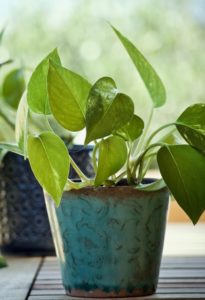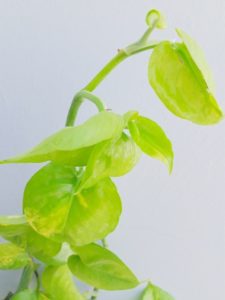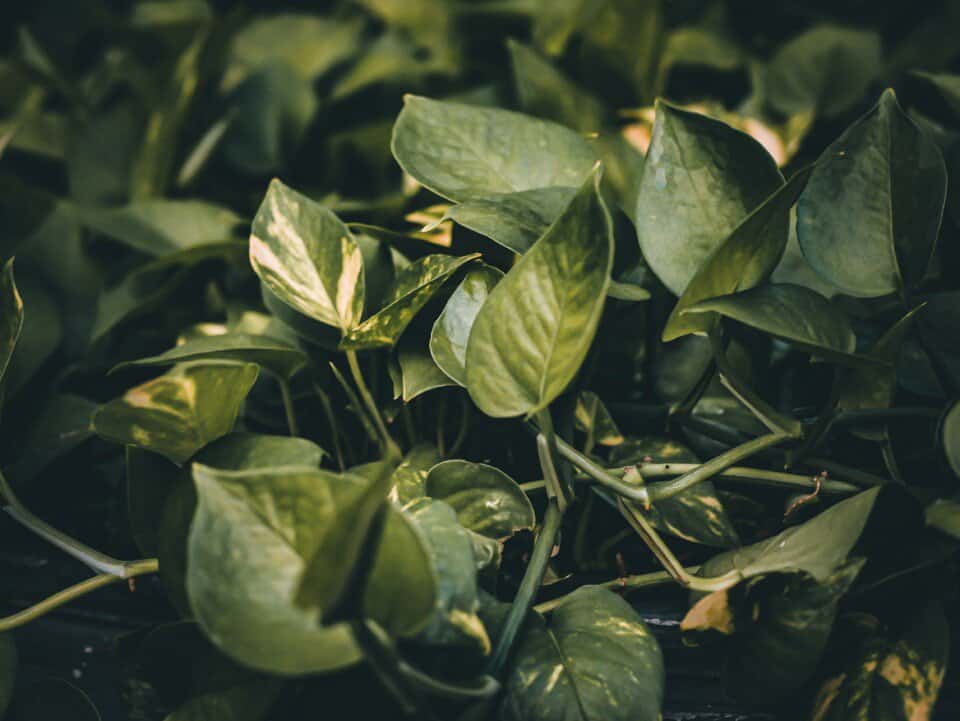Some links in the post are affiliate links and I get a commission from purchases made through some links found in the post.
Are you a plant lover and want to add a touch of green to your house? Try out the pothos plants.
The pothos plants are fast growing and can make your house more pretty with it’s beautiful leaves.
Golden Pothos is one of the easiest indoor plants to cultivate and maintain. They are most likely the best plant for beginners.
The golden-green variegated leaves gleam as if treated with a high-quality wax coating.
You will be proud to be the proud owner of this plant because it has such an upscale appearance. And this incredible experience requires minimal effort.
Occasionally, however, the beautiful variegated leaves of Golden Pothos begin to start turning black or develop black-brown spots.
The leaves turning black on your pothos can be due to excessive light, underwatering or overwatering, poor drainage, insect damage, over fertilization and temperature and moisture issues.
This article will explain more on why the leaves on your Golden Pothos are becoming black and suggest how you may avoid this problem in the future.
Why Are My Golden Pothos Leaves Turning Black?
 Because of excessive watering or frost, the leaves of your Golden Pothos are becoming black (temperature less than 45oF or 7oC). As a result of overwatering, the roots and leaves have gone black.
Because of excessive watering or frost, the leaves of your Golden Pothos are becoming black (temperature less than 45oF or 7oC). As a result of overwatering, the roots and leaves have gone black.
If your Golden pothos leaves are turning black as a result of one or more of the following:
The blackening of Pothos leaves caused by overwatering, extreme temperature variations, insects, disease, excessive light, and fertilizer. These conditions can lead Pothos to flounder, develop ill, and ultimately perish.
Excessive Light
Although pothos plants thrive in bright environments, they should never be exposed to direct sunlight because it will cause them to burn.
Ensure that your room has a comfortable temperature and access to ample sunshine. Also, relocate your pothos plant away from areas with excessive sunlight.
If you initially put the Pothos in a room that gets a lot of direct sunlight and is not growing as well as you would want, you can relocate it to a location that gets less light.
Underwatering and Overwatering
Pothos plants are more tolerant to drought than other plants, requiring less watering. Root rot, which darkens the leaves, is caused by overwatering. The plant may perish if this condition is not handled on time.
Plants die when given too much water! That is because the lack of oxygen in your soil damages your roots, preventing them from absorbing water properly.
Whether you think you’re watering too much, check to see if the soil isn’t overly saturated before you water again.
Do not water your soil more than once every two weeks or until it is dry. It depends on the weather and humidity levels in your location.
Keep the soil of your pothos plants damp but not drenched. A significant accumulation of water in the drainage trays beneath the pots indicates that you are overwatering.
When you overwater a pothos, you drown the plant’s roots. These begin to decay, causing the leaves to perish.
Poor Drainage
As previously alluded to, your pothos plant will rapidly perish if submerged in water.
Even if you take care not to overwater the Pothos, the drainage pores may become jammed, or the plant’s roots may become encircled, which can cause poor drainage.
Prevent this by removing any soil clumps that may obstruct holes and hinder water drainage.
In addition, if you see that the soil is dry and crumbly, you should press the ground up against the pot’s side so that water can reach the plant’s roots.
If the soil is compact on the surface, it should be broken up, and you should invest in potting soil with excellent drainage.
How to fix it
Remove any clumps of soil that may prevent the water from draining through the holes in the ground.
To ensure that water can reach the plant’s roots, you must press down on the soil. Be sure to aerate the soil if the surface has gotten compacted.
Use potting soil with excellent drainage for your Pothos.
Insect Pestilence
 Some common insect pests of houseplants, such as mealybugs and spider mites, may also generate black-brown patches on plant leaves.
Some common insect pests of houseplants, such as mealybugs and spider mites, may also generate black-brown patches on plant leaves.
No pests are attracted to healthy Pothos. However, if the plant is not given the right circumstances, it is more likely to be infested by bugs.
The insect-caused spots are small and appear in the middle of the leaves, whereas the root-caused dots appear on the sides of the leaves. At low temperatures, a leaf’s entire surface becomes black.
How to fix it
- First, remove the ivy from the rest of your plants to prevent pests from spreading. To avoid a shock to the vine, spread the damaged leaves.
- To get rid of mealybugs, spray the Pothos with horticultural oil. Among other things, horticultural oil prevents mealybugs from entering the plant through ventilation holes, which kills them.
- Insecticides may be used in mealybug infestations of any kind. In contrast, insecticides have come a long way since their introduction. Your activities in this regard will not result in any harm to the plant. Alternatively, you will be able to eradicate the insects. We recommend that you apply a rubbing alcohol to the problem region.
Light Overexposure
Pothos would flourish in bright settings, but if placed in direct sunlight, it will suffer severely.
If your plant receives excessive light, it and its leaves may be damaged. Your Pothos’s leaves are turning black and wilting as a result.
The direct sunlight would damage plant cells, causing the leaves to discolor. To avoid this, place the plant out of direct sunshine while ensuring it remains in a room with sufficient light.
How to fix
To avoid this slight problem, place your plant in an area with a lot of natural light but away from direct sunlight.
Don’t be afraid to move your Pothos to a darker room; they will thrive there. However, you should always ensure that the room where your Pothos is kept has some natural light.
Over-fertilizing
In a greenhouse, Pothos are frequently fertilized effectively. Therefore additional fertilization is not usually essential.
Pothos, like other plants, requires nutrients to thrive. However, excessive fertilizer application will injure your Pothos.
Fertilizer burn is characterized by blackening leaves. Your potted Pothos does not require regular fertilization. Once every two to three months, from spring through fall, apply fertilizer.
How to fix
If you see that your Pothos is not growing, this does not necessarily mean that you need to give it more fertilizer; more often than not, it signals that the plant is not getting enough light or water.
Before adding additional fertilizer, inspecting the plant’s watering and lighting is essential. Fertilizer application should be avoided when plants are dormant in winter.
Temperature and Moisture
You should do your best to maintain the temperature of your Pothos between 15 and 30 degrees Celsius. The plant is at risk of dying if the temperature drops below 15 degrees Celsius.
Pothos often flourishes in average household humidity and enough lighting. Nonetheless, lower humidity may cause your Pothos leaves to turn brown and black during winter.
How to fix
If your Pothos lacks humidity, spray the plant to supply additional moisture.
A humidifier or furnace may also be of assistance in the development of your pothos plant.
A straightforward strategy for increasing the humidity close to plants is the pebble tray method.
Additionally, by putting your plants together, you can increase the humidity around them.
Final Thoughts
 The color of pothos plants can often change, going from yellow to brown and, as we’ve seen, even black.
The color of pothos plants can often change, going from yellow to brown and, as we’ve seen, even black.
But there’s no need to freak out; find the relevant cause and repair it. You won’t likely run into any of these problems again if you concentrate on plant care and the surroundings.
Your Golden pothos leaves may be turning black for one of these causes. You can figure out where your plant is going wrong and fix it.
Pothos plants can go from yellow to brown, as we’ve seen, even black, depending on their environment. It’s not necessary to panic but to identify the problem and apply the fix.
The best course of action is to avoid an incident in the first place. If you pay attention to how you care for your plant and the surroundings, you’ll be less likely to run into any of these problems.


